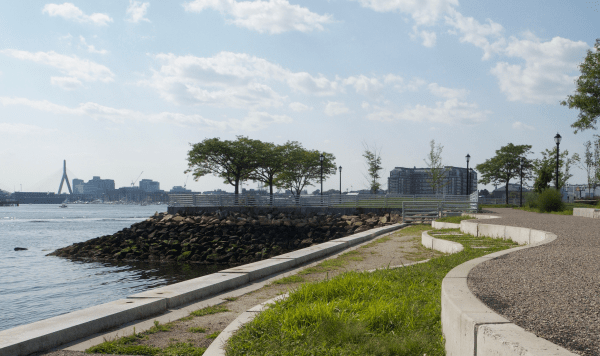What Is A Halfway House? It’s Different from Sober Living Homes
At Sober Centers of America, we understand how overwhelming it can feel to navigate these choices. That’s why our mission is to be a trusted resource hub, offering clear information, guidance, and meaningful connections for individuals and families seeking the right path forward. Calls to any general helpline will be answered by treatment providers, each of which is a paid advertiser. ✓ No Hidden costs and insurance surprises We expose true out-of-pocket expenses before you commit.
Halfway Homes Versus Sober Living Homes
If you have further questions or seek more information about Bhouses.net, feel free to inquire and discover how it contributes to the evolving landscape of successful reintegration. Residents are typically required to contribute financially by paying rent or fees, fostering a sense of responsibility and financial independence. Residents may be Sober living house required to actively seek employment or engage in educational activities as part of their transition plan. These services are designed to ease the transition and set each individual up for success in recovery. This communal structure helps reduce relapse risk during a critical phase of recovery.
Restarting life after recovery is difficult. A halfway house can make the transition easier.
The information we provide is not intended to be a substitute for professional medical advice, diagnosis or treatment. It should not be used in place of the advice of your physician or other qualified healthcare provider. Some halfway houses acceptinsurance, but it’s up to your insurance company to determine how much is covered and if you’ll need to pay a co-pay. If you’re thinking about entering a sober living home and want to know if insurance covers it, it’s best to contact your insurance company directly. If you’re committed to living a sober lifestyle but aren’t ready to transition to life at home, what is a halfway house a halfway house is a great option to consider. Halfway houses provide support to those who are new to recovery and are committed to a life without their addiction.
The 6 Stages of Mental Health Recovery
- From a halfway house, you can expect a structured, substance-free environment with curfews, peer support, counseling requirements, and life skills training designed to promote sobriety and prepare for independent living.
- Some homes will have a supervisor or house manager there to monitor activities 24/7, while others have a house manager on premise for nights only.
- Subsequent audits identified a number of major staffing issues, including high turnover rates and misconduct.
- Residents with insurance have access to in-network services, while those without insurance qualify for free or low-cost healthcare through state-funded programs.
Halfway houses manage security and safety for residents through measures like monitoring, drug testing, and staff supervision. Regular checks ensure that residents follow the rules and remain sober, creating a structured environment conducive to recovery. Drug tests are conducted on a scheduled basis or when deemed necessary to detect any substance use and prevent relapse. Daily schedules at halfway houses are highly structured to promote routine and accountability.

Individuals who use a halfway house include those transitioning from inpatient addiction treatment, incarceration, mental health facilities, or homelessness as they work toward stable, independent living. These residents need structured support to rebuild life skills, avoid relapse triggers, and reintegrate safely into society. The purpose of a halfway house is to provide structured transitional living that promotes independence, sobriety, and stability for individuals recovering from addiction or transitioning from incarceration. By living in a transitional housing setting, individuals have time to build important life skills while maintaining abstinence in a substance-free space. A halfway house is a transitional living facility that provides structured housing, support, and rehabilitation services for individuals recovering from addiction or reentering society after incarceration. Halfway houses serve as a bridge between intensive treatment programs or correctional facilities and independent living, offering accountability, peer support, and access to counseling or employment resources.

What Are the Benefits of Living in a Halfway House?
It is still a controlled environment designed to help you recover, stay sober and grow in confidence and skills to resume your life. A halfway house is supportive housing for people trying to end addictions to drugs or alcohol. To break an addiction for good, a structured alcohol or drug rehabilitation programme is the necessary first step for permanent recovery. Residential rehabilitation provides an intense programme of support and care. Halfway houses are transitional residential places for people recovering from alcohol or drug addiction.
Employment and Daily Schedule Obligations
Halfway homes have on-site staff, who may include house managers, social workers, or mental health professionals, providing supervision and support. The two main types of facilities are sober living and transitional housing after prison. For example, there are some that focus solely on individuals with mental conditions.
- Discover affordable rehab centers near you, offering easy access and convenience.
- In the United States, the majority of programmes distinguish between a halfway home and a sober/recovery house.
- Contact us today to schedule an initial assessment or to learn more about our services.
- Indeed, regaining total freedom after being in a very regimented, restrictive world can throw you off balance.
Your Local Sober Living Guide Featuring Sober Events In Virginia
The rules regarding cellphones in halfway houses can vary from one facility to another. Some halfway houses may allow residents to have cellphones with certain restrictions, such as limited usage hours or no access to the internet. Others may prohibit cellphones altogether to prevent potential issues like drug deals or maintaining unhealthy relationships. Leaving the safety of treatment for a temptation-packed daily life is a huge step! Through a combination of accountability and education, this supportive housing solution helps us prepare for tough real-world scenarios after treatment. Generally, this means that these homes aren’t ideal for untreated trauma, dual diagnosis, or very high relapse risk.
